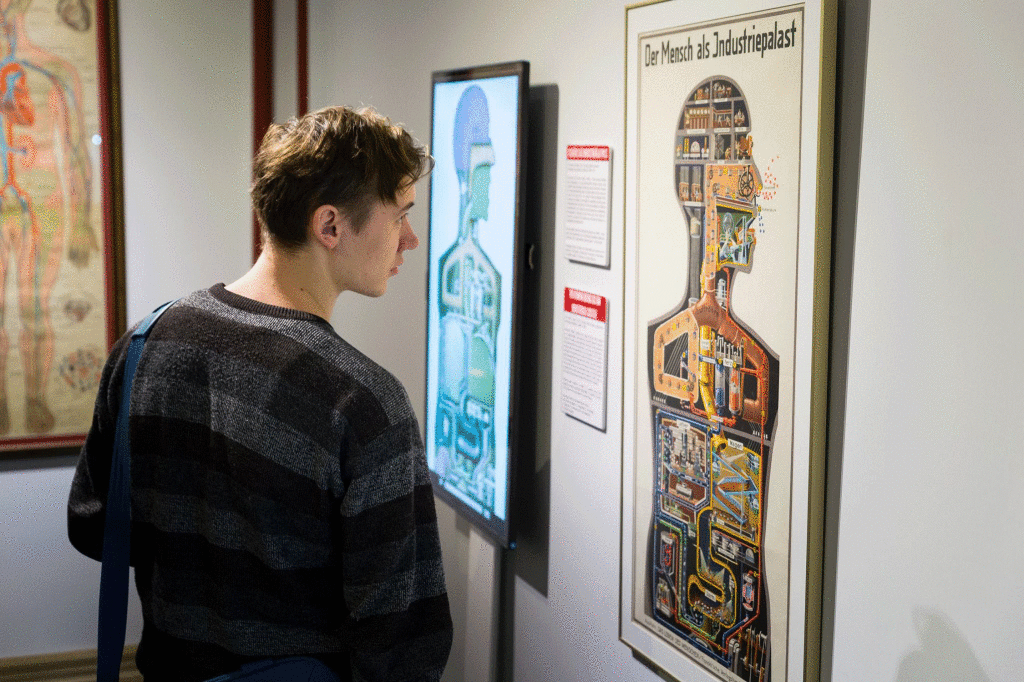Exhibition: History of Medicine Museum, Riga
Der Mensch als Industriepalast, Fritz Kahn’s famous wall chart, is part of the exhibition Anatomist: The Factory of the Human Body in the Pauls Stradiņš History of Medicine Museum in Riga, Latvia.
The exhibition, on display until March 16, 2015, has two closely linked parts: The first reviews modern artists’ interpretations of the “factory of the human body”, while the second presents work on the same theme by Andreas Vesalius.
This year marks the 500th anniversary of Vesalius’ birth in Brussels. He was an outstanding physician and known as the father of scientific anatomy. In 1543, he published the textbook De humani corporis fabrica, which overturned the prevailing views of the structure of the human body. In the book, Vesalius revealed “living” anatomy, beyond the traditional frozen boundaries. Visitors to the exhibition can examine the second edition of De humani corporis fabrica, which was released in 1555, and an interactive version of the book allows visitors to view it page by page. The exhibition also features anatomic specimens from the Jēkabs Prīmanis Museum of Anatomy.
Modern interpretations of the human body as a factory are presented in the work of 10 local artists, who worked in partnership with the Belgian Embassy in Latvia and the magazine Kuš! International interpretations of the human body as a factory are also included. For example, the exhibition presents an animated video by the German artist Henning M. Lederer based on Der Mensch als Industriepalast, created by the German physician and artist Fritz Kahn in 1926.



